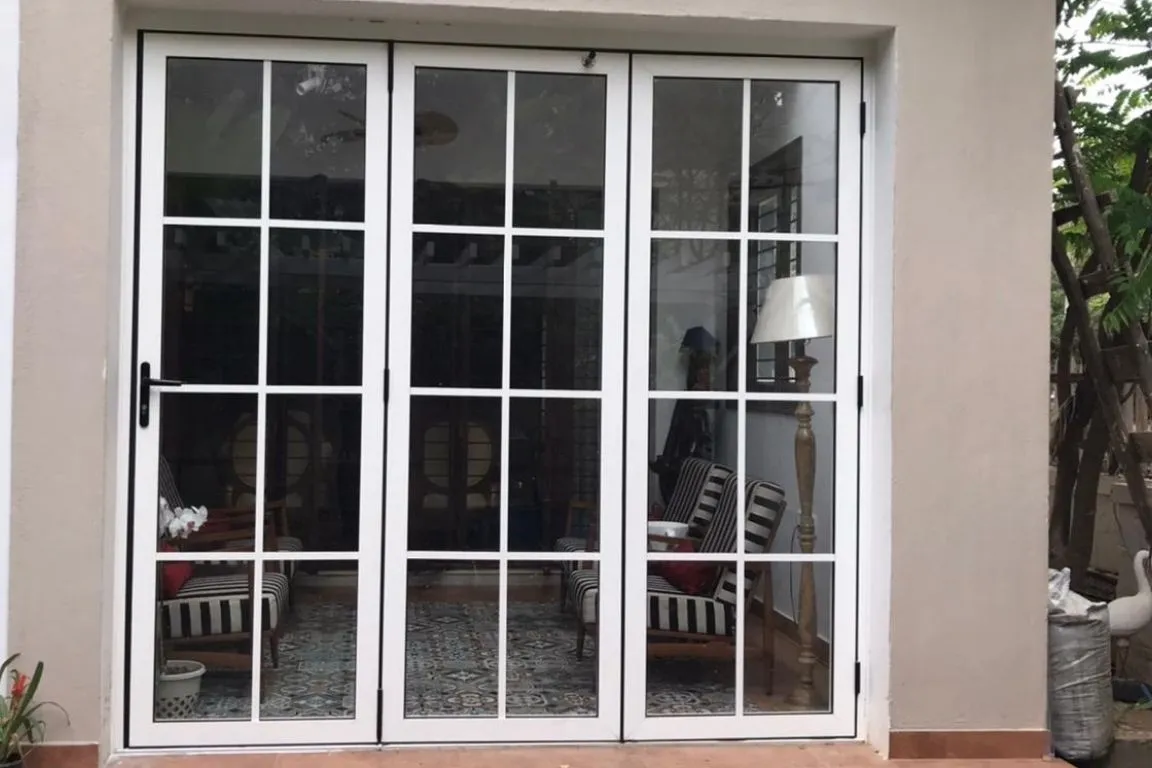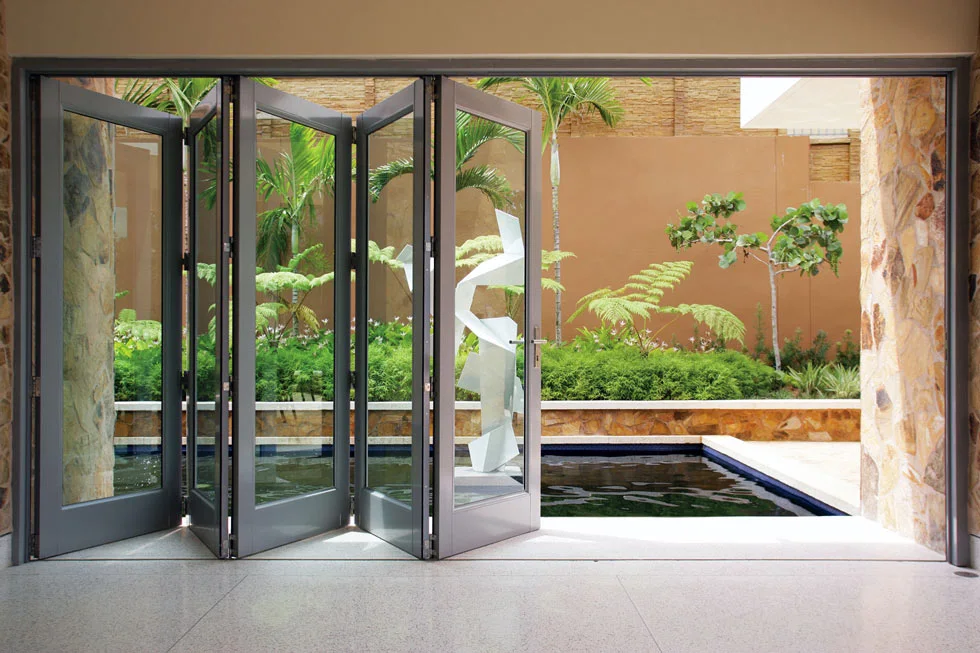Aluminum doors are modern entry and interior solutions made from lightweight, corrosion-resistant aluminum, designed to offer strength without bulk.

They’re a favorite for homeowners and builders alike thanks to their durability, sleek aesthetics, energy efficiency, and minimal maintenance needs.
With these advantages, it’s no surprise aluminum doors are becoming more popular in both residential and commercial buildings.
Tools and Materials You’ll Need

Drill/driver, screwdriver, wrench, measuring tape, level
Door frame, hinges, fasteners, silicone sealant
Gloves, safety glasses, earplugs
(Optional): Shim kit, expanding foam, weatherstripping
Pre-Installation Preparation

Before jumping into installation, it’s important to prepare your space properly to avoid issues later on. Start by measuring the height, width, and depth of the opening—make sure there’s at least 20mm of clearance around the door frame for a proper fit.
Next, clear out any debris, old hardware, or damaged materials. If there’s an existing door, remove it carefully and ensure the wall surface is clean and level.
Lastly, check if the opening is plumb, square, and straight—this helps ensure the aluminum door sits perfectly without gaps or misalignment. Getting these steps right saves time and frustration down the line.
Step-by-Step Installation Process
Installing an aluminum door might seem intimidating, but with the right steps and a little patience, you can get it done confidently. Let’s walk through it together:
Step 1: Assemble the Door Frame

Mark the hinge and screw locations on the frame for accurate fitting.
Temporarily attach the hinges and install the handle or lockset to check alignment with the door leaf.
Step 2: Install and Level the Frame

Place the frame into the door opening and use a level to ensure it’s plumb and even.
Add shims as needed and secure it with screws—tightening only after everything is properly aligned.
Step 3: Insert the Door Panel

Position the door panel into the frame and attach it to the hinges with screws.
Adjust screw tension so the door opens smoothly and check that spacing is even on all sides.
Step 4: Seal and Weatherproof

Apply sealant or spray foam to fill any gaps between the frame and wall.
Then add weatherstripping and install a bottom sweep to protect against drafts and moisture.
Step 5: Final Adjustments and Lock Installation

Install the locks and test the latch to ensure everything works correctly.
Make final hinge adjustments if needed so the door swings and closes without sticking.
Post-Installation Tips

Now that your aluminum door is installed, a little upkeep goes a long way in keeping it in top shape. Start by lubricating the hinges and rollers every 6 months to keep things moving smoothly.
It’s also a good idea to check the weatherstripping regularly—replacing it if it starts to peel or crack. Clean the door with mild soap and water to keep it looking fresh without damaging the finish.
Don’t forget to inspect for loose screws or worn-out hardware, especially around the hinges and lock. And for extra protection, install a door stop to avoid accidental damage from slamming or strong winds.
FAQs About Aluminum Door Installation
1. Can I install an aluminum door by myself?
Yes, you can if you’re confident using tools and following instructions—but hiring a pro is safer for large or tricky installs.
2. Do aluminum doors need special screws?
Yes, it’s best to use stainless steel or self-tapping screws to avoid corrosion and ensure a secure hold in aluminum frames.
3. Are aluminum doors energy efficient?
Absolutely—modern aluminum doors with proper seals and thermal breaks help reduce heat loss and improve insulation.
4. How long do aluminum doors last?
With basic maintenance, aluminum doors typically last 20 to 30 years or even longer, making them a smart long-term choice.
Conclusion

Installing an aluminum door is a smart upgrade that combines strength, style, and efficiency. With the right tools and steps, you can achieve a secure fit and long-lasting performance.
Need expert support or quality aluminum doors? Reach out to our team for guidance, custom options, and smooth installation service.






![gray door with silver handle sign that says no - Are Aluminum Doors Better Than Upvc? [November 2025] - APRO gray door with silver handle sign that says no](https://aprowin.com/wp-content/uploads/2024/09/gray-door-with-silver-handle-sign-that-says-no-500x280.webp)
![Sliding glass doors opening to a poolside view in a living room - How Much Does a Door Cost? Door Installation Guide [2025] - APRO Sliding glass doors opening to a poolside view in a living room](https://aprowin.com/wp-content/uploads/2024/11/Sliding-glass-doors-opening-to-a-poolside-view-in-a-living-room-500x328.webp)
![Living room with sliding glass doors leading to a balcony - Standard Door Sizes: Essential Guide for Homeowners [2025] - APRO Living room with sliding glass doors leading to a balcony](https://aprowin.com/wp-content/uploads/2024/11/Living-room-with-sliding-glass-doors-leading-to-a-balcony-500x333.webp)
![Two garage doors with windows and overhead door mechanism - How to Adjust Garage Door Springs: Easy Guide [2025] - APRO Two garage doors with windows and overhead door mechanism](https://aprowin.com/wp-content/uploads/2025/02/Two-garage-doors-with-windows-and-overhead-door-mechanism-500x320.webp)
![Roller assembly being installed on a sliding window frame - How to Replace Rollers on Aluminum Sliding Door [2025] - APRO Roller assembly being installed on a sliding window frame](https://aprowin.com/wp-content/uploads/2025/01/Roller-assembly-being-installed-on-a-sliding-window-frame-500x489.webp)
![Exterior black aluminum bifold doors partially open - Aluminum Bifold Door Adjustment Guide | Tips [ 2025] - APRO Exterior black aluminum bifold doors partially open](https://aprowin.com/wp-content/uploads/2025/01/Exterior-black-aluminum-bifold-doors-partially-open.webp)
